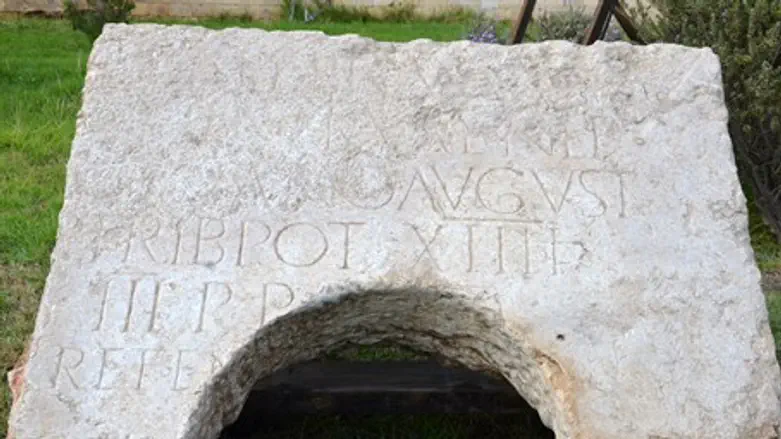
The Israel Antiquities Authority has announced a rare find of "tremendous historical significance," it announced Tuesday: a fragment of a stone engraved with an official Latin inscription dedicated to the Roman emperor Hadrian.
IAA researchers stated during the announcement that the stone fragment, found during a series of excavations north of Damacus Gate, may be among "the most important Latin inscriptions ever discovered in Jerusalem."
Researchers say the significance of the inscription stems from the fact that it specifically mentions the name and titles of Hadrian who was an extremely prominent emperor, as well as a clear date - a tangible confirmation of the historical account regarding the presence of the Tenth Legion in Jerusalem during the period between the two Jewish revolts against Roman rule.
Dr. Rina Avner and Roie Greenwald, excavation directors on behalf of the Israel Antiquities Authority, spoke to the press about the discovery.
“We found the inscription incorporated in secondary use around the opening of a deep cistern," they said, in a statement. "In antiquity, as today, it was customary to recycle building materials and the official inscription was evidently removed from its original location and integrated in a floor for the practical purpose of building the cistern."
"Furthermore, in order to fit it with the capstone, the bottom part of the inscription was sawed round," they added.
The size and clarity of the letters make the discovery important, they said. The inscriptions, consisting of six lines of Latin text engraved on hard limestone, was read and translated by Avner Ecker and Hannah Cotton of the Hebrew University of Jerusalem.
The English translation of the inscription reads, "To the Imperator Caesar Traianus Hadrianus Augustus, son of the deified Traianus Parthicus, grandson of the deified Nerva, high priest, invested with tribunician power for the 14th time, consul for the third time, father of the country (dedicated by) the 10th legion Fretensis Antoniniana."
“This inscription was dedicated by Legio X Fretensis to the emperor Hadrian in the year 129/130 CE," Ecker and Cotton concluded, adding that the find is the second half of a single inscription.
The first was discovered nearby in the 19th century and was published by the pre-eminent French archaeologist Charles Clermont-Ganneau; it is currently on display at the Studium Biblicum Franciscanum Museum - also known as the the Faculty of Biblical Sciences and Archaeology of the Pontificia Universitas Antonianum - in Rome, Italy.
Only a small number of ancient official Latin inscriptions have been discovered in archaeological excavations throughout the country and in Jerusalem in particular.
Once the excavation findings are published the inscription will be conserved and put on display for the public.